
Sous vide
Definition: relating to or denoting a method of cooking food slowly in a vacuum-sealed pouch at a low temperature so as to retain most of the juice and aroma
In French, “sous vide” translates literally as “under vacuum.” But before you reach for the upright in your cleaning closet, note that cooking sous vide does not require that kind of vacuum. Over the past twenty or so years, usage of sous vide in print has skyrocketed as the culinary technique has become more and more popular even with home cooks. It is used as both an adverb (as in “steak cooked sous vide”) and adjective (as in “sandwiches prepared with sous vide meats”) with the same meaning, and is also seeing increased usage as a verb.
… grass-fed Sonoran beef cooked sous vide for forty-eight hours, then seared and served with tiny California lentils, potato foam, and white chayote caramelized with Mexican vanilla.
— Dana Goodyear, The New Yorker, 30 Jan. 2012
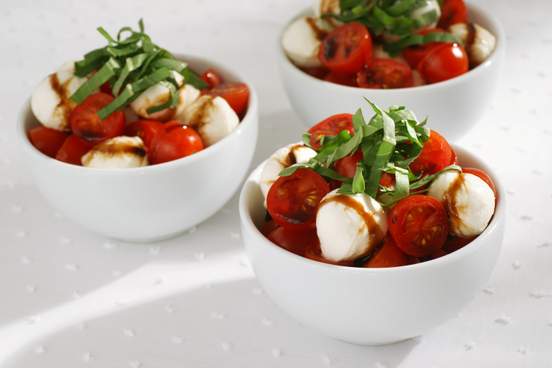
Chiffonade
Definition: shredded or finely cut vegetables or herbs used especially as a garnish
Chiffonade was borrowed from the French chiffonnade (same meaning) in the late 1800s. That chiffonade in turn comes from the verb chiffonner, meaning to “crumple.” We think a “chiffonade” of herbs sounds more appetizing than a “crumpled mass,” though, don’t you?
Chiffonade Salads This is a term applied to any sort of a salad in which the ingredients are shredded fine. It is a good method to use in winter when lettuce is scarce and dear. The greater part of the outside leaves of a head can be used. The shredding may be done with a silver fork, but no one will be much the wiser if scissors are used. A chiffonade bed with slices of hard boiled eggs ranged upon it is a good winter salad. Another chiffonade has balls of equal parts of Neufchatel and Roquefort rubbed to a paste.
— Keith’s Magazine on Home Building, 1909
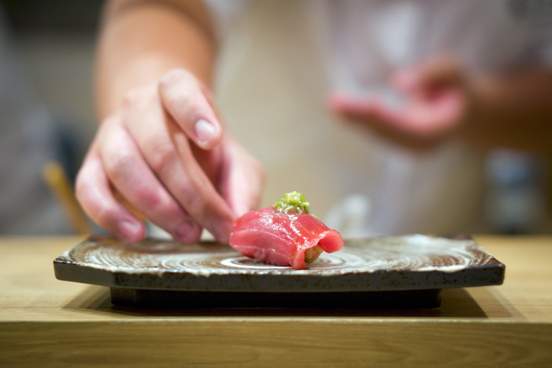
Omakase
Definition: a series of small servings or courses (as of sushi) offered at a fixed price and whose selection is left to the chef’s discretion
Omakase is a borrowing from Japanese, and translates directly as “leaving (a decision, choice, etc.) to someone else.” It is used in English both as a noun, referring to a tasting menu decided upon by the chef, and as an adjective or adverb meaning “according to the chef’s choice,” as in “we enjoy ordering omakase as opposed to à la carte.” We entered omakase in our dictionary in 2022, though it has appeared in print in English since at least 1967.
I was halfway through this year’s premier food offering at the festival: a 17-course sushi omakase inside an air-conditioned tent complete with sake pairings.
— Jenn Harris, The Los Angeles Times, 20 Apr. 2022

Decant
Definition: to pour (a liquid, such as wine) from one vessel into another
One of the most iconic scenes from the original Star Wars takes place in a cantina in the grimy space-burg of Mos Eisley, where a surly barkeep (unnamed in the film, but later identified as “Wuher” on an official trading card) decants drinks for even surlier customers when he isn’t betraying a rather hostile prejudice toward droids. Decant comes not from a galaxy far, far away but from the Medieval Latin word cantus, meaning “edge,” itself from the earlier Latin cantus referring to the iron ring around a wheel. It is believed that this older cantus, or canthus, is also responsible for the English words canteen and cantina.
[Nick] Petrulakis crafts drinks for parties thrown by publishers for upcoming books and sometimes for launch events at his store. He doesn’t decant for every author launch—when we talked, he calculated that Booksmith had hosted a dozen events just in the last week—but “I make drinks if I love a book,” he said.
— Erika Mailman, LitHub.com, 3 Dec. 2019

Fond
Definition: small particles of browned food and especially meat that adhere to the bottom of a cooking pan and are used especially in making sauces
Chefs are known to be quite fond of fond, and understandably so. The sticky bits of browned food that may to some appear only as a harbinger of stubborn dishwashing to come are in truth flavor-packed morsels that add depth to any dish. Just deglaze with wine (or your liquid of choice), scrape that fond up, and baby you’ve got a stew going. The adjective fond comes from the Middle English word fonne, meaning “fool,” while the noun fond is a French borrowing, going back to the Old French word funt or font, meaning “bottom” or “base.”
Continue to cook for about 4 to 5 minutes, stirring occasionally, then add the red wine. Naturally, you want to scrape up all that really good fond from the bottom of the pot with your wooden spoon.
— Anthony Bourdain, Anthony Bourdain’s Les Halles Cookbook, 2004
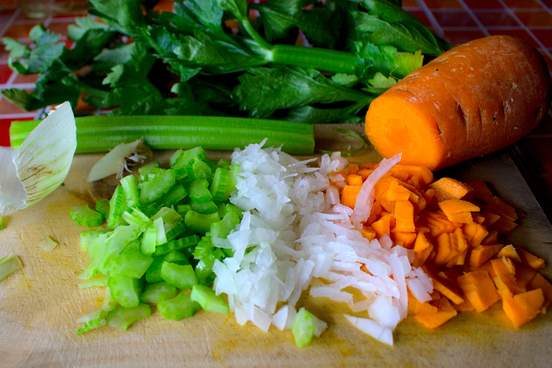
Mirepoix
Definition: a sautéed mixture of diced vegetables (such as carrots, celery, and onions), herbs, and sometimes ham or bacon used especially as a basis for soups, stews, and sauces
In case you couldn’t tell from its distinctively Gallic je ne sais quoi, mirepoix is a French borrowing, like many culinary words in English. It is thought to come probably from Charles de Lévis, duc de Mirepoix, or one of his successors, with Mirepoix being the name of a commune in southern France. According to some sources, the chef of this duke was responsible for codifying the use of aromatics (namely carrots and onions) as a base for soups, stews, and sauces. Today, mirepoix typically refers to carrots, onions, and celery, but mirepoix can be made with different/additional ingredients.
A mirepoix made of small-diced onions, carrots, and celery is classic here, but you can swap some or all of those veggies for any of your favorites: mushrooms, more carrots, peas, even broccoli. Whatever vegetables you use, be sure to cook them before they go into the meatloaf so they’re tender and toothsome rather than crunchy.
— Emma Christensen, TheKitchn.com, 28 Sep. 2023
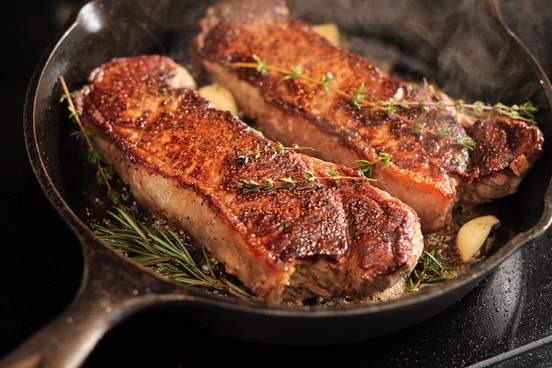
Maillard reaction
Definition: a nonenzymatic reaction between sugars and proteins that occurs upon heating and that produces browning of some foods (such as meat and bread)
Browning occurs in food due to different chemical reactions. Familiar examples of enzymatic browning (aka oxidation) include the flesh of potatoes and apples when exposed to the air (yuck) and grapes and plums turning into raisins and prunes when dried in the sun (yum). Maillard reaction refers to a form of nonenzymatic browning involving sugars and proteins that is responsible for beloved flavors in a variety of foods and especially meat and bread. The term is named after French biochemist Louis-Camille Maillard, who first described the process.
No one has ever described me as “subtle” or “restrained,” and I have a tendency to gravitate towards flavor profiles that are as strong and (sometimes) as polarizing as my personality. I like lots of salt, acid, umami, and those beautiful dark, roasty flavors brought out by the Maillard reaction…
— Claire Lower, Lifehacker.com, 21 Mar. 2022
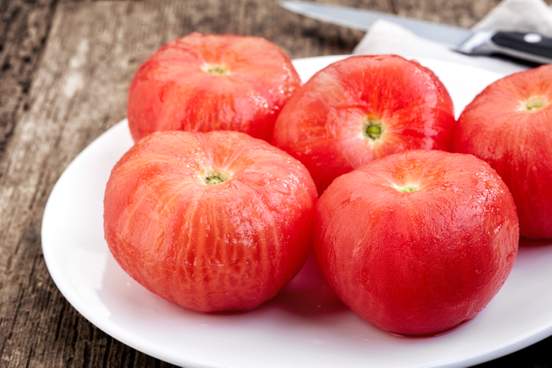
Blanch
Definition: to scald or parboil in water or steam in order to remove the skin from, whiten, or stop enzymatic action in (such as food for freezing)
In Middle English, the verb blanchen was used specifically for the action of turning almonds white by parboiling them in order to remove their skin, coming as it did from the Anglo-French word blanchir (“to turn white”) and further from blanc, meaning “white.” Today, many vegetables are prepared by blanching, often followed by dousing or soaking them in ice water to stop the cooking process and retain color and a desired level of crispness.
These days, when I serve green beans, they go to the table with a slight crunch, from blanching in boiling water, and garnished with something fresh—garlic sautéed in browned butter, cooked minced red bell peppers, or nuts, as with this interpretation of an almond-studded classic, green beans amandine.
— Toni Tipton-Martin, Jubilee: Recipes from Two Centuries of African American Cooking, 2019
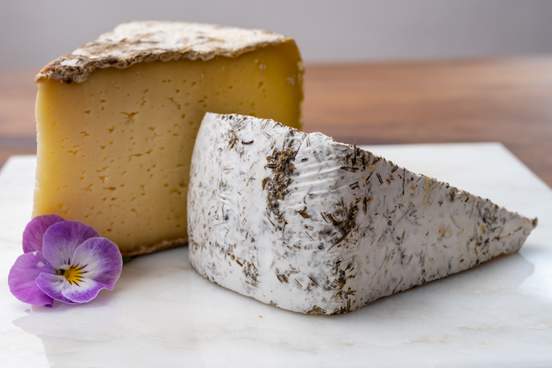
Bloomy
Definition: having or being a thin, whitish rind formed on cheese by exposure to mold
“Having or being” may strike you as a strange way for an adjective definition to begin, so let us explain. When describing a cheese, such as brie, bloomy means “having a thin whitish rind.” In other words:
a delicious round of bloomy brie = a delicious round of brie having a thin, whitish rind formed by exposure to mold.
But as bloomy often precedes the word rind itself, “being” makes more sense in such cases.
Camembert is a soft, creamy cheese with a white, bloomy rind originating in Normandy, France. It has a buttery, milky texture and slightly earthy flavor that can vary depending on the ripeness of the cheese.
— Dainius Vaitiekunas, TheDailyMeal.com, 17 Oct. 2023
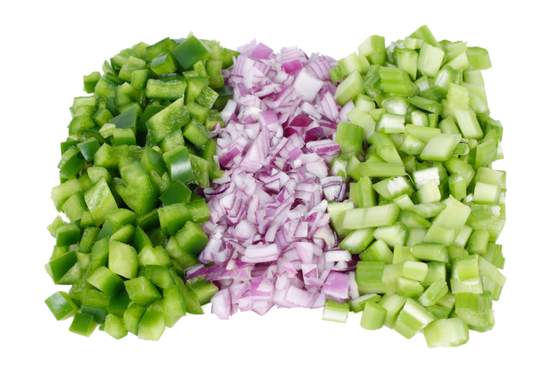
Holy Trinity
Definition: the combination of onion, bell pepper, and celery as it is employed in Cajun and Creole cuisine
Holy Trinity refers to an variant of mirepoix used in Cajun and Creole cuisines (using bell peppers in place of carrots), including famous dishes such as jambalaya and gumbo.
You might not know it by name, but chances are you are familiar with the Holy Trinity of cooking if you've ever made a pot of gumbo. This backbone of Cajun and Creole cooking is essential for nailing the flavors and cuisine of Louisiana. It also has a rich history, connected to the different groups of people who settled in the region.
— Alana Al-Hatlani, Southern Living, 8 Feb. 2024

Stagiaire
Definition: a usually unpaid intern working in a professional kitchen as part of their training to become a chef : a cook who is doing a stage
Although, like many culinary terms, stagiaire has received a major visibility boost in recent years thanks to the hit television series The Bear, it has been in use in English since the late 1970s. It is a (surprise surprise!) borrowing of the French word for a trainee, which in earlier use referred specifically to someone working in a church or cathedral. It traces further back to the Medieval Latin word stagium, meaning “abode” or “residence.” Stagium is also the ancestor of the noun stage, both a shortening of stagiaire and a word for the internship itself, and the verb stage, “to intern in a professional kitchen.”
As an unpaid stagiaire for Ever, a three-Michelin-star Chicago restaurant, Richie works a shift trailing the front-of-house staff, keeping his eyes and ears attuned to the wants and needs of the guests. He catches wind of a table’s passive lament about not having a chance to try deep-dish pizza during their time in Chicago; the solution is to bring deep-dish to them. Richie makes an impromptu trek to Pequod’s and returns with a whole pie.
— Danny Chau, TheRinger.com, 5 July 2023

Cheffy
Definition: characteristic of or befitting a professional chef (as in showiness, complexity, or exoticness)
While we suppose someone wearing a toque and whites could be described as cheffy), that’s not how the word tends to be used. Since the early 1990s, cheffy has been used instead not to mean “looking like a chef” but rather “characteristic of or befitting a professional chef.” An ingredient, cooking method, plate presentation, or new twist on a common or simple food (think hot dogs fried in duck fat and topped with wasabi mayo and mango granita), may all be more or less cheffy by suggesting or displaying the creativity—sometimes ostentation—of professional chefs.
Tampa Bay also is home to lauded smokehouses, kitschy burger joints and ice cream stands and a vast array of food trucks. This one is slinging some of the cheffiest tacos east of Austin. …Drawing inspiration from multiple eras in Mexican culinary history and regional cooking styles, since opening in 2018, [Rene] Valenzuela has built a formidable following of locals who come from all corners of the metro for offerings like the Baja Peninsula-inspired octopus taco…
— Amy Drew Thompson, The Orlando Sentinel, 19 Sep. 2021
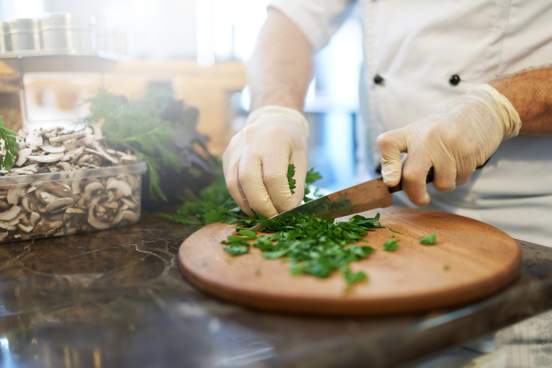
Mise en place
Definition: a culinary process in which ingredients are prepared and organized (as in a restaurant kitchen) before cooking; also : the set of ingredients prepared using his process
If you’re one of those industrious, proactive, possibly mythical individuals who manages to prep all of your family’s meals on Sunday evenings—chopping veggies, making stock, wrapping and freezing individual tablespoons of tomato paste (!!!)—essentially you are engaged in a kind of mise en place. Coming directly from French where it translates as “setting in place” or “positioning,” mise en place refers to the process in some restaurant kitchens of preparing and organizing one’s ingredients before cooking. It can also be used to refer to the set of prepped ingredients itself.
In the kitchen, a wood fire popped and crackled pleasantly all morning. Each day we listened to records—Ethiopian jazz, Italian disco, the Rolling Stones—while we prepared the mise en place. I would space out while doing repetitive tasks, like picking herbs or peeling quail eggs or zesting yuzu.
— Shayna Goodman, Refinery29.com, 21 Oct. 2021
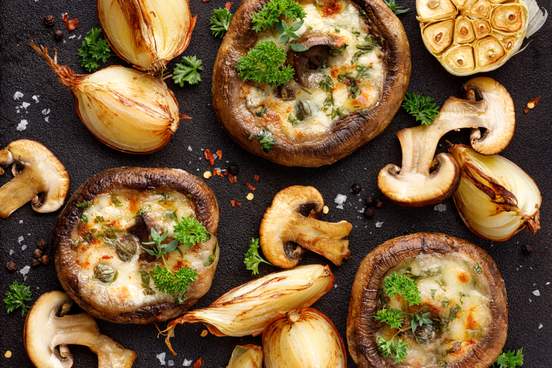
Umami
Definition: the taste sensation that is produced by several amino acids and nucleotides (such as glutamate and aspartate) and has a rich or meaty flavor characteristic of cheese, cooked meat, mushrooms, soy, and ripe tomatoes
A Japanese scientist was the first to discover the savory taste of the amino acid glutamic acid, which was found to occur in soup stocks made with seaweed. This fifth basic taste—alongside sweet, sour, salty, and bitter—was named umami, meaning “savoriness” in Japanese. Umami can be experienced in foods such as mushrooms, anchovies, and mature cheeses, as well as in foods enhanced with monosodium glutamate, or MSG, a sodium salt derived from glutamic acid.
Beloved sometimes even more than the tender greens, the rich broth, called pot likker, marries the essence of the greens with the umami of the pork, and is best consumed sopped up with absorbent cornbread.
— Ronni Lundy, Victuals: An Appalachian Journey, 2016

Sommelier
Definition: a waiter in a restaurant who has charge of wines and their service : a wine steward
In Old French, soumelier referred to someone who drove a pack animal. By Middle French, the term had evolved to refer to an official charged with the transportation of supplies. Finally, in regular ol’ French, the word became sommelier, and its meaning of “wine steward” carried over when it was adopted into English in the early 1800s. One also sometimes encounters sommelier preceded by a word for another beverage, as in “beer sommelier,” though accredited beer sommeliers may also be referred to by the trademarked term Cicerone.
Pronounced REECE-ling, this queen of grapes has a strange standing: While many sommeliers and wine professionals praise it for its excellent value, high quality, and incredible versatility with food … the general drinker simply finds it too sweet.
— Aldo Sohm with Christine Muhlke, Wine Simple: A Totally Approachable Guide from a World-Class Sommelier, 2019




